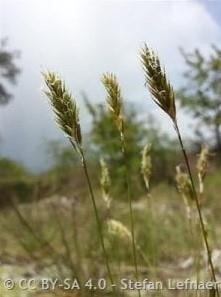By Chris Penrose
Did you notice a very early maturing grass in your hay fields this spring? I have seen it for years and it continues to spread. About the time or just before bluegrass heads out, this grass matures as well. What you really notice is a small, tight clustered seedhead and a stem that is rather short.

Sweet Vernalgrass. Photo: mt.gov
For years, I called it cheat grass and for some reason, after I told a farmer what I thought it was, I went back and checked. I quickly realized that it was not cheat grass and I could not figure out what it was. So I did what you are supposed to do – I called a county educator, Clif Little from Guernsey County. When I explained it to him, he quickly told me that it was Sweet Vernalgrass. Then I check out the name and he was exactly right. For 25 years, I have told farmers the wrong name – for that I am sorry, but now I know and I hope you do too.
After doing some searching on it, it tends to be more prevalent in lower fertility hay fields. It can be a winter annual or a perennial grass. There is mixed information on palatability but my cows have consumed it for years in my hay. In fact, it used to be sold in some hay mixtures. It gives off a fragrant smell when cut or crushed. It gets a couple feet tall, but most of what I cut is just the stems and seedheads, likely making it a much lower quality hay. The thin stem allows it to cure faster but we don’t want to rush baling it as improperly cured Sweet Vernalgrass hay can produce dicumarol, the same thing moldy sweet clover produces and can be deadly to livestock.
With all the unwanted plants springing up, this is one that should not be an issue, especially if the hay is well cured. I just think it is a sign that we could most likely be growing something better.
Source : osu.edu